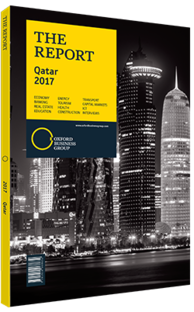Sharia-compliant bonds a permanent fixture in Qatar's regional finance services
With governments across the GCC feeling the pinch from low global oil prices, sukuk (Islamic bonds) are witnessing a renewed trend of issuances. According to the ratings agency Fitch, new issuances of sukuk in core markets rose by 26% in 2016, with the trend continuing into the first half of 2017. Moreover, Fitch expects the absolute market share of sukuk to pick up, as more sovereigns turn to sharia-compliant bonds to finance their debt. Some $40bn of new sukuk with a maturity of over 18 months were issued in “core markets” in 2016 – understood as the GCC, Malaysia, Indonesia, Turkey and Pakistan – representing 28.5% of total bond issuances in these markets. Market share was in fact down marginally on 2015, principally because Saudi Arabia, Abu Dhabi and Qatar witnessed growth in conventional debt issuance to fund their budget deficits.
Sukuk Issuances
Qatar raised $9bn in Eurobonds, which was one of the largest single issuances by any government in the Middle East, in order to fund its then projected 2016 deficit of $12.8bn. By contrast, new sukuk issuances by Qatar in 2016 were limited to private placements in the domestic market, and consisted largely of rollovers of existing debt. For instance, in August 2016 the QCB sold QR1.6bn ($439.4m) of sukuk, followed by QR825m ($226.6m) in September and QR1.5bn ($411.9m) in October, with both being coupled with conventional bonds of similar value.
Qatar has historically represented the largest single market for long-term sovereign sukuk issuance, accounting for more than 60% of total issuances since 2010. With the government anticipating a $7.8bn deficit for 2017, a substantial new issuance of sovereign sukuk may be in the offing, despite Qatari banks avoiding debt markets due to the diplomatic blockade. Indeed, in October 2017 Qatar International Islamic Bank finished creating a $2bn sukuk programme, with the first bond set for issuance when market conditions improve.
Improving Uptake
While the growth in new sukuk issuances is seen by some as a sign of the robustness of the sharia-compliant format, for others the lack of a substantial uptake in issuances – particularly given the major recourse to debt issuance from a number of regional sovereigns – is a sign of underlying structural problems in the product. In contrast to Fitch, international ratings agency Standard & Poor’s (S&P) issued a report in July 2016 titled “Why Low Oil Prices Aren’t Sending Sukuk Issuance Skyward”. It noted that in the first half of 2016 the year-on-year (y-o-y) issuance of conventional debt in the GCC rose by 148.2%, while sukuk issuance dropped by 15.2% y-o-y.
According to S&P, the complexity of sukuk issuance is a key deterrent to tapping the market. This would appear to be an oblique reference to the necessity for sukuk to abide by certain underlying standards in order to remain sharia-compliant. The two major formats of sukuk are capital or asset-based instruments known as sukuk al ijarah and debt-based instruments called sukuk al murabaha. In each case a special purpose vehicle is typically required to hold the asset or debt in trust on behalf of the sukuk holders. While professionals working within the Islamic finance sector claim that this is no more burdensome than issuing conventional paper, it could act as a disincentive.
Mixed Picture
Research from Moody’s Investors Service further complicates the picture. Since 2010 the share of sharia-compliant long-term issuances within the total long-term issuances of GCC government debt has varied significantly, reaching a peak of 47% in 2012 and then dropping to 5% in the first half of 2016. Within that period however, the figure has oscillated markedly: 25% in 2013, 43% in 2014 and 38% in 2015.
It would seem fair to state that sharia-compliant fixed-income debt has become a permanent and lasting feature of regional finance and is subject to the same vagaries of the market as conventional debt. In this respect, with yields beginning to rise across the board, new commercial and sovereign issuances will depend on market conditions in the short to medium term.
You have reached the limit of premium articles you can view for free.
Choose from the options below to purchase print or digital editions of our Reports. You can also purchase a website subscription giving you unlimited access to all of our Reports online for 12 months.
If you have already purchased this Report or have a website subscription, please login to continue.

